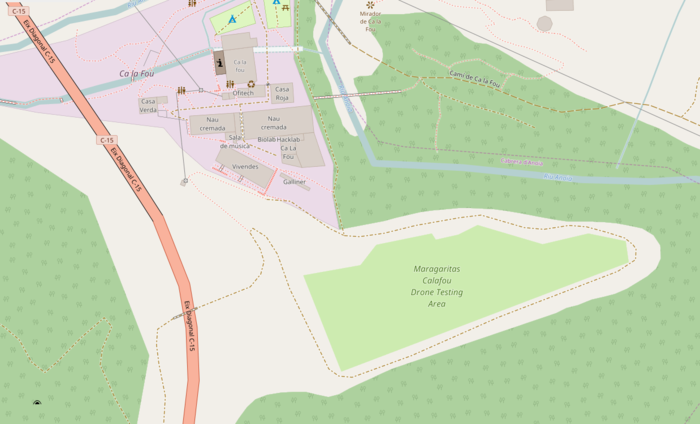Entre el conocimiento y el destino
El Porqué
Vivimos en un planeta que se dirige velozmente hacia la destrucción irreversible de las condiciones de vida necesarias para la supervivencia humana. El IMVEC desarrolla herramientas libres de investigación y autodefensa ante los fenómenos de contaminación medioambiental.
Hack The Earth
Polamap
El Polluting Areas Map es una de las herramientas que estamos desarrollando para fomentar la investigación remota de espacios contaminantes.
Actualmente se encuentra en fase de desarrollo. Una vez al mes nos reunimos en la sala de chat ubicada en matrix para darle forma colectivamente. La sala es accesible via IRC en freenode#polamap o matrix https://riot.im/app/#/room/#polamap:matrix.org (no es necesario registro)
Cámara de Monitorización del Río Anoia
Durante las jornadas Hack The Earth 2017 proponemos la instalación de un dispositivo de monitorización del Rio Anoia. Construcción de una cámara fotográfica Open Source con raspberry pi, que capture imágenes del Río Anoia a intervalos de una hora permitiendo un registro histórico de los eventos de contaminación del Río.
Preparando la documentación.
Vuelve por aqui en unos días ;)
Testing Teroda
Uno de los motivos por los que llegamos a Calafou dos días antes del inicio del evento fue realizar pruebas con el prototipo de dispositivo aéreo Teroda, un quadcóptero destinado a la detección y mapeo de gases letales a través de un sensor de medicion de la calidad del aire y una cámara fotográfica open source. La pruebas nos llevaron a concluir que el diseño que tenemos al momento actual debe ser modificado por el siguiente motivo:
Para hacer el Teroda un dispositivo pequeño y compacto utilizamos una placa (computadora de abordo) con el magnetómetro integrado, lo cual nos evitaría tener que poner al Teroda un palito con el magnetómetro en su final. No es posible de momento. La ubicación del magnetómetro justo por encima de la placa de control de los motores hace que las interferencias electromagnéticas generadas desorienten al magnetómetro con la conocida como "deriva de retrete". El drone trata de mantener la posicion indicada por el GPS pero el magnetómetro no es capaz de marcar el Norte. Como consecuencia de esto el drone comienza a trazar circunferencias alrededor del punto cada vez más pronunciadas. Siguiente paso: aislar la computadora de abordo de la placa de control de motores y en caso de que no funcione nos veremos obligadas a cambiar la coputadora de abordo.
Durante esta semana publicaremos las especificaciones técnicas.
Todas las pruebas fueron realizadas en el recientemente renombrado Aeródrono Margaritas Calafou. Hemos geolposicionado el lugar en Open Street Maps para futuras visitas droneras de Calafou: https://www.openstreetmap.org/#map=18/41.50965/1.70451
Between knowledge and fate (english)
WHY?
We live on a planet that moves rapidly towards the irreversible destruction of the living conditions necessary for human survival. The IMVEC develops free self-defense and research tools to the phenomena of environmental pollution.
POLAMAP
Polluting Areas Map is one of the tools we are developing to encourage remote research of polluting areas.
It is currently under development. Once a month we meet via chat room located in the matrix for shaping the map collectively. The room is accessible via IRC on freenode#polamap or matrix: https://riot.im/app/#/room/#polamap:matrix.org (it is not necessary to register)
MONITORING CAMERA FOR THE ANOIA RIVER
During the Hack The Earth days we propose the installation of a monitoring timelapse camera at the Anoia river. Construction of a camera Open Source with raspberry pi, which capture images of the Anoia River at intervals of an hour allowing a historical record of the contamination events of the river.
Preparing the documentation.
Back here in a few days ;)
TESTING TERODA
One of the reasons why we got to Calafou two days before the start of the event was to perform tests with the prototype of the aerial device Teroda, a quadcopter aimed at the detection and mapping of lethal gases through a sensor for measuring the air quality and an open source camera. The evidence led us to conclude that the design we have at the present time must be modified for the following reason:
To make the Teroda a small and compact device we use a plate (on board computer) with built-in magnetometer, which would avoid us having to put to the Teroda a stick with the magnetometer in its top. It is not possible at the moment. The location of the magnetometer just above the motor control board makes electromagnetic interference generated too high. The drone tries to keep the position indicated by the GPS but the magnetometer is unable to mark the North. As a result the drone begins tracing circumferences around the point ever more pronounced.
Next step: isolate the computer on Board of the motor control board and should not work we will be forced to change the on board computer.
This week we will publish the specs.
All tests were performed in the recently renamed Aerodrono Daisy flowers Calafou. We've geopositioned the area in Open Street Maps for future visits of Calafou interested in drone testing: https://www.openstreetmap.org/#map=18/41.50965/1.70451
